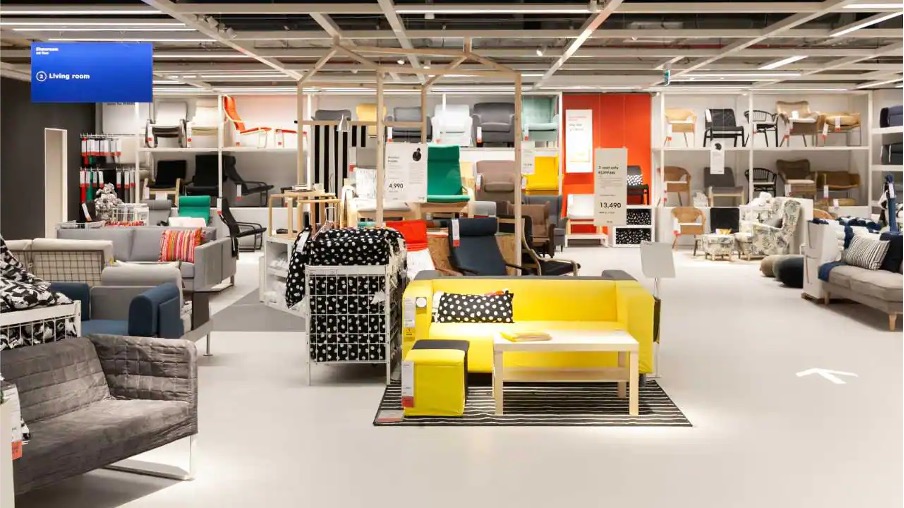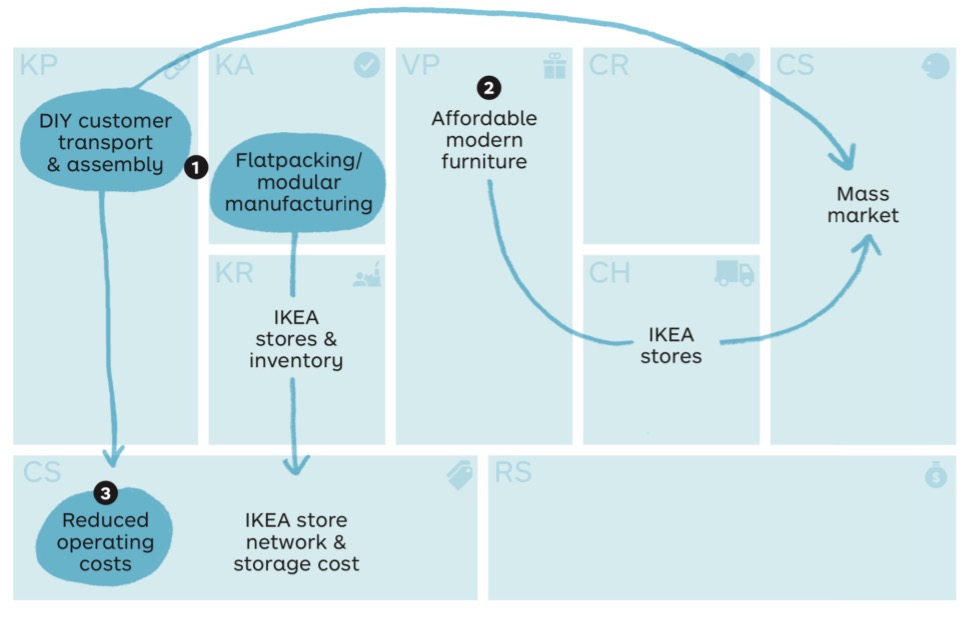In the year 1943, Ikea began operations as a mail-order sale company. A Swedish business that started selling its goods in 1948 and opened its first physical shop in 1958. Its first store outside of Sweden was opened in Norway in 1963, followed by Denmark in 1969. After opening stores in Europe, it later extended to North America, the Middle East, East Asian countries, Southeast Asia, and the Far East.
Ikea being a conglomerate company has certain business strategies and tactics that revolve around providing properly designed and functional furniture at affordable prices. Ikea is also one of the most successful global retailers the world has ever known. The culture within the company believes in creation of unique atmospheres between the employers and the employee, thus ensuring a unique workplace, such that the employers can work with the best effort.

Now a days, Ikea has famous for its “Ikea effect.” Now, ‘What is Ikea effect?’ The furniture that is sold by Ikea is to be assembled by the owner after purchasing it. This makes the furniture valued more by the owner of the product. The idea is, when an individual assembles the product, they invest a lot of their energy, and time thus a feeling of attachment is developed with the finished product. It leads the people to have closer connection with that piece of furniture. The “Ikea effect” is similar to, a cognitive bias called the “endowment bias” where in the people tend to value items if they feel that it belongs to them or if they feel a sense of ownership over it. As human beings we like the feeling of knowing what we are doing, we like that we are capable of handling tasks that is at our hands and can handle the obstacles rather than feeling incompetent or foolish.
According to perceptions, people who believe in self-efficacy are much better at handling the stressful situations and coping up with challenges; they recover more quickly from setbacks and failures. Such people who are internally motivated, work for internal happiness rather than solely working for some external reward. And assembling a piece of furniture boosts our self-efficiency. That is partially why we see the furniture that we assemble to be valuable.
Research shows that ‘self-efficacy boost’ plays a greater role in the “Ikea Effect”. It has used this strategy for years now, which has benefited the company greatly.

Moving forward to the key elements in the Ikea’s business strategy; below there are mentioned few of their business strategies that helped them to become one of the most successful global businesses.
Marketing strategy of Ikea
Marketing is the backbone of any business organization. Going through various research and statistics it shows that that Ikea as a company has laid emphasis on specific marketing activities, tactics which has allowed it to realize its organizational mission, values, and vision.
Product strategy: Capitalizing on affordability and mass consuming culture
Ikea has built its proposition around offering a diverse selection of attractively designed and fully furnished home products, appliances, and accessories that are priced affordably for mass consumption. The company employs a product strategy that is primarily focused on ready-to-assemble furniture sales, which serves as its flagship offering. This decision to develop and sell ready-to-assemble home furnishing items presents Ikea with several significant advantages.
One of the key advantages is – the ease of storage. By providing products in a ready-to-assemble format, Ikea can minimize the space required for storage. This allows them to stock a wide range of products within their stores while optimizing the use of available space efficiently. Another advantage is related to shipping and transportation. Ready-to-assemble furniture can be packed in flat packages, reducing the overall volume and weight of each item. This results in lower shipping costs for both the company and the customers. It also enables more efficient logistics, as more products can be transported in a single shipment, reducing the environmental impact, and improving overall delivery efficiency.
Furthermore, the decision to sell ready-to-assemble furniture helps lower costs for both the company and the customers. Manufacturing and packaging furniture in a ready-to-assemble format typically involves less labor and materials compared to fully assembled furniture. This cost-saving is passed on to the customers, allowing Ikea to offer affordable prices for their products.
Overall, Ikea’s focus on ready-to-assemble furniture as a core part of its product strategy provides the company with advantages in terms of storage, shipment, and cost reduction. These benefits contribute to Ikea’s ability to offer a wide range of well-designed and furnished home products and accessories that are affordable for mass consumption.

Pricing Strategy: Mass appeal through affordable pricing consideration
Affordability is a central aspect of Ikea’s pricing policy and overall strategy, emphasizing its commitment to mass consumption. To achieve this, Ikea employs a combination of pricing strategies, including price leadership, value-based pricing, and cost-plus pricing.
Price leadership is a significant component of Ikea’s approach. The company strives to set competitive prices within the market, often leading the industry in terms of offering affordable home furnishing products. By leveraging its scale and operational efficiency, Ikea can maintain lower prices compared to many of its competitors. This price leadership strategy helps attract a wide customer base seeking affordable options for their home needs. Additionally, value-based pricing is integral to Ikea’s approach. The company aims to provide customers with products that offer a high level of value relative to their price. Ikea designs its furniture with functionality, quality, and aesthetic appeal in mind, ensuring that customers perceive the products as valuable and worth the price they pay. By delivering a combination of style, functionality, and reasonable pricing, Ikea creates a value proposition that resonates with its target market.
Furthermore, Ikea employs a cost-plus pricing strategy. This approach involves determining the production costs, including materials, manufacturing, and other overhead expenses, and then adding a markup to set the final price. By carefully managing its supply chain, streamlining production processes, and leveraging economies of scale, Ikea can keep its costs relatively low. This allows the company to apply a reasonable markup while maintaining affordability for customers.
In summary, Ikea’s pricing strategy revolves around affordability and mass consumption. The company combines price leadership, value-based pricing, and cost-plus pricing to offer competitive prices, provide value to customers, and ensure sustainable profitability. These strategies work in harmony to support Ikea’s proposition of offering a wide range of well-designed and furnished home products that are accessible to a broad customer base.
Placement Strategy: Maintaining global distributions through retail operations:
IKEA’s distribution strategy is primarily focused on global retail operations, with more than 440 retail stores worldwide. The company has a significant presence in various regions, including Europe, the United States, China, and plans to expand further in South America and Southeast Asia.
The retail stores are strategically located both outside cities and within city centers, aiming to make them easily accessible to the public. These stores typically have large floor areas to showcase the extensive range of IKEA’s product offerings, allowing customers to experience and visualize the furniture in person. To support their retail operations, IKEA integrates warehouses into their full-size stores, ensuring efficient inventory management. However, in cities with limited land areas, alternative strategies are employed. For example, in locations like Hong Kong, where space is constrained, IKEA operates multiple stores while maintaining a central warehouse in a separate location. Store designs and considerations vary based on the geographical characteristics of each location. In countries with limited land area and planning restrictions, retail stores may serve as display galleries and offer pick-up services, requiring customers to make in-store or online reservations.

The ‘ready-to-assemble’ nature of IKEA’s products plays a crucial role in its distribution strategy. This product design allows for minimized shipping costs, as flat packaging reduces the volume and weight of each item. It also facilitates easier storage in warehouses, maximizing inventory capacity and optimizing space utilization. In summary, IKEA’s distribution strategy revolves around global retail operations, with strategically located stores worldwide. The company adapts its store designs and considerations based on the specific geography of each location. The ‘ready-to-assemble’ product design enables cost-efficient shipping, streamlined warehousing, and improved inventory management.
To conclude, IKEA’s overall business is a success. IKEA has a strong leadership foundation, with Kamprad serving as a transitional leader who offers valuable insights across all management divisions. To sustain its global success, the company should further optimize its low-cost differentiation strategy. In China, a new strategy involving local suppliers can enhance pricing control. IKEA has proven its adaptability by redefining offerings to suit different markets. It should also focus on securing suitable manufacturers to maintain excellent manufacturing skills. Targeting new expansive markets, particularly the younger demographic, holds significant potential. Expanding operations and implementing recommendations necessitate increased manpower, including hiring additional management levels in foreign markets to ensure sustainability. By leveraging its quality products, low-cost strategy, and adding more promotional and target market options, IKEA can boost profits, revenue, and market share.
Written by – Sneha Das
Edited by – Mrunmayee Patwardhan
